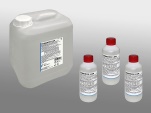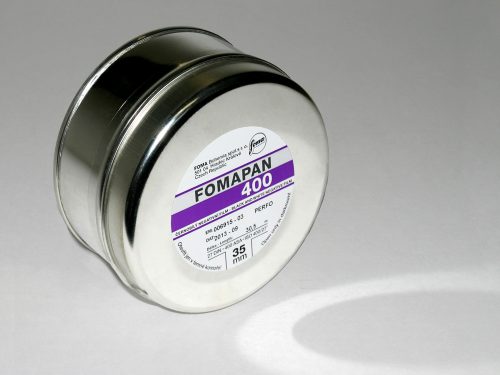FOMAPAN is a panchromatically sensitized, black-and-white negative film designed for taking photographs. Available in 100, 200 and 400 ISO in formats of 35mm, 120, 4 x 5, 8 x 10
Foma Liquid Emulsion 1kg
R2779,00 Vat Included
4 in stock (can be backordered)
4 in stock (can be backordered)
Description
PHOTOGRAPHIC EMULSION
In general
There are technically given limits for the use of photopapers. To extend these limits and so to support the creative power both amateur photographers and professionals, this universal emulsion was developed. By its correct use, the results limited only by users ́ own imagination, can be achieved. The photographic emulsion enables creating works of great value both in artistic and photographic respect. Of some importance is the fact that standard results can be achieved provided the correct emulsion handling procedure is applied.
The photographic emulsion is made by using the most modern production technology. The emulsion features medium contrast and extremely high covering power which enable gaining a wide scale of halftones even by a relative high yield of 3 to 6 sq. m per 1 kg of emulsion. For the majority of common applications (particularly on smooth surfaces), only one layer of emulsion is sufficient to be spread. An advantage of this high-speed emulsion are short exposures which make large size enlarging possible. With the majority of developers, this emulsion gives a neutral to mildly warm image tone.
The emulsion can be spread on the most different bases, as e. g. wood, textile, glass, china, ceramics, metals, leather, stone, concrete, plaster etc. What is, however, important is the photochemical inactivity of the base. This condition not being met, the base should be treated with a suitable waterproof layer (e.g. epoxide varnish, etc.). Another important requirement is a good wetting power of the base surface. To ensure good coherence of the emulsion to the base, the non-wettable surfaces should be treated with a suitable preparation layer before spreading the emulsion.
Example of treatment solution composition (perfectly clean and dry objects are treated by this solution):
Gelatine (1 % solution) Chrome alum (10 % solution) Ethanol 96 %
Packaging
100,0 ml 0,5 ml 4,0 ml
The photographic emulsion is supplied in light-tight PE-bottles. The commercial packaging consists of a cardboard box containing: Photographic Emulsion 1kg or 0,25 kg (Open in darkroom only!)
HARD Hardener 15 ml or 4 ml
Coverage
3–6 m2 of the surface can be covered by 1 kg of the emulsion depending on the base type, surface quality and thickness of the applied layer.
FOMA HARD Hardener
This special hardener is supplied together with the emulsion. It provides a good mechanical resistance of the applied layer therefore, it is recommended for use in all applications. It is to be added immediately before use directly into the melted emulsion. Recommended dosage of the hardener is 15 ml to 1 kg or 4 ml to 0.25 kg of emulsion; depending on individual demands on the layer hardening degree, the dosage can range within certain limits. Other suitable hardeners can also be used instead of the supplied product, e.g. formalin (dosage: 1–5 ml of 10% solution to 1 kg of emulsion), possibly also in combination with chrome alum (the same dosage).
Emulsion application working procedure
The emulsion is to be melted in a water bath heated to approx. 35-40 oC in a well darkened room equipped with suitable safelight (identical with the recommended safelight for FOMA hard grade photographic papers). Due to the high sensitivity of this emulsion and expected prolonged time of the layering process, it is necessary to minimize safelight illuminance, for instance by extending the distance of the light source from the working surface, etc. Immediately before usage, required additives are mixed into the emulsion while constantly stirring. It is mainly the hardener, providing mechanical resistance of the layer during processing, and sometimes also Fotonal wetting agent for better levelling.
The emulsion application (in the darkroom) should be adapted to the shape of the given object and the procedure must be tested in advance. Horizontal surfaces can be covered at once by pouring the emulsion after the surface heating to 30 oC and by spreading the measured amount. Drying in a vertical position can be easily done after hardening. The emulsion can also be applied by a foam roller or brush on flat and moderately rough surfaces. Almost all surfaces can be covered by spraying. We recommend applying 2 or 3 layers in the last two described cases; always apply another layer only after the previous layer is perfectly dry. You should expect a yield of about 3 m2 from 1 kg of the emulsion in the case of a manual application due to layer unevenness. The hardening will take place after 20–30 min; the period of complete emulsion hardening depends on the base character and the emulsion layer thickness (from 18 to 48 hours).
Note: Only the necessary amount of the emulsion is taken and melted for each application. Unused emulsion should not be returned back to the storage (it contains a hardener).
Processing
The processing is carried out by the usual procedure in the same safety illumination as in the case of standard black-and-white papers with fixed contrasts, i.e. yellow-green, orange, red, etc. (for example Agfa Y7J, Agfa G7, Kodak OC, Ilford 902 etc.). Strong working developers, for example Fomatol LQN and Fomatol P from the FOMA assortment, are recommended because of the high content of silver and the relatively thick layer during manual application. Fomacitro stop bath is suitable for effective stopping the development. We recommend Fomafix rapid fixer for the fixing. Similar baths manufactured by other producers can also be used. Fast flow should not go directly to the emulsion during the final washing by running water with temperatures between 10–20 oC.
Drying
The base with the applied emulsion is dried as freely unfolded at room temperature, or by warm air with the temperature max. 50 oC.
Warnings and precautions: Perfect fixing and sufficiently long washing (20 – 30 min) is very important, otherwise the developed photographic image is not stable over a long period of time.
Storage
The photographic emulsion must be stored in the original containers in places away from the sunlight (other chemically inactive containers, for example PE and PP bottles, glass, etc. can also be used). Stable temperature within the range of 4 – 10 oC is an important condition of storage. Avoid any freezing of the emulsion! Handle the emulsion carefully in order to avoid any contamination by bacteria and moulds despite the fact that disinfectants are added into it during the production.





Reviews
There are no reviews yet.